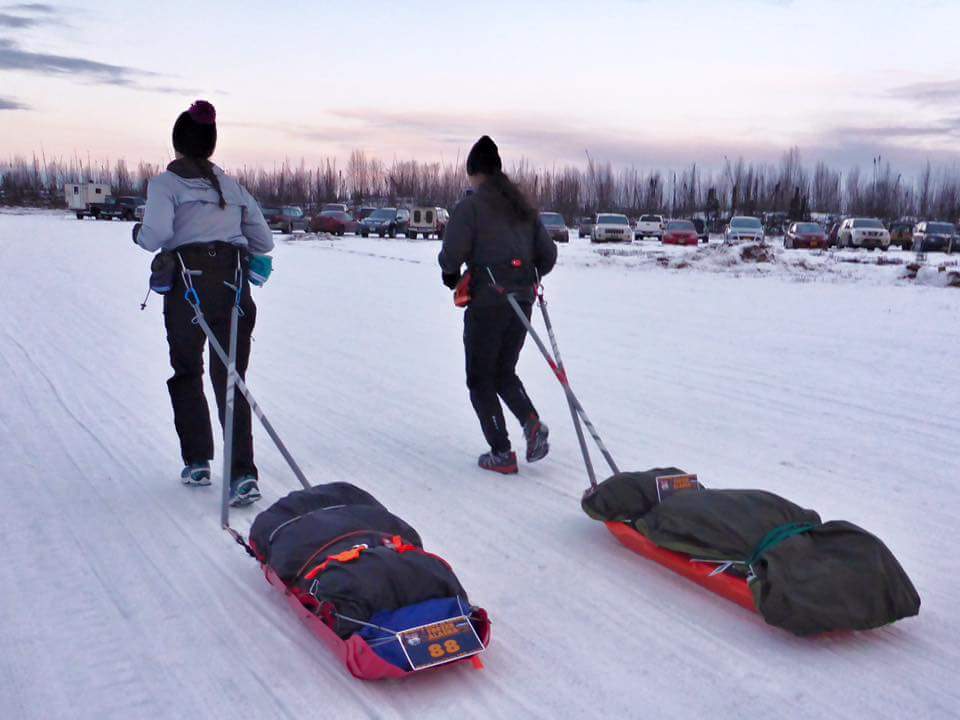Six Questions with HURT 100 Women's Champ Shawn McTaggart

On a dark Alaskan evening in October, Shawn McTaggart, 39, found herself layered in fleece, doing lunge repeats in the sauna of her local gym. She knew what onlookers were thinking: Oh honey, you’ll just lose water weight.
But she wasn’t trying to lose weight; she was training for her next ultra, the HURT 100 Mile Endurance Run in Honolulu, Hawaii. Coming from cold, dry Palmer, Alaska, she knew she had to train specifically for Hawaii’s hot, humid climate, hence the sauna workout.
Apparently her fleece-entombed sweat-fests worked. January 14, 2017, McTaggart walked away with the win for women and tenth place overall.
While McTaggart may be better known for twice completing the thousand-mile Iditarod Trail Invitational (and twice completing the 350-mile stretch), which spans from Nome to Anchorage, she has also been crushing shorter (read: less than 1,000-mile) races for the last 12 years. Since 2011 alone she has been among the top 20 female finishers at 31 races ranging from 14 to 350M.
Trail Runner caught up with her to learn about how she trained for HURT while living in Alaska, whether 100 miles is really any easier than 1000 and more.
After running 1,000 miles, does a 100-miler feel like a piece of cake
No. I love them but they’re just hard. It’s hard to get your stomach and your sleep dialed in. The longer distances are more up my alley because you can eat all the time and sleep whenever you want. Training for this race kept me focused and honest. Typically during the winter I’ll blow off a run and figure I can just get fit during the [multi-day] race, but I didn’t have an option this time. It kept me on my toes.
It sounds so cliché, but you really have to dig deep [for longer races]. It’s more about the loneliness. For this weekend it was more about going through the pain.
How did it feel running a lap course as opposed to an extended point-to-point
It was uncomplicated. It was just so simple to go out and run and not think about gear, just wear[ing] a shirt and shorts. I didn’t have to plan out aid stations with drop boxes. It felt really liberating.
The sections were varied, [which] helped me get through because it started to feel too familiar. [Seeing] the other runners out there so often […] was just so cool. Without fail everyone was like, “good job, you look great.”
How did you train for the heat, coming from Alaska
My dad helped me insulate an outdoor room and we put a bunch of heaters in there, thinking it would be a sauna. It totally didn’t work. I’d turn the heaters on [after work], and then go out there 30 minutes later, and it would be 32 degrees.
Then I joined a gym with a really nice sauna and steam room. I had them to myself and wore layers and layers of fleece and would do lunges. From October through the end of December, I worked up to being in there for about an hour.
How did the race go, compared to your expectations
Everyone says it’s like breathing through a straw, but [the humidity] was not as bad as I imagined. I think that really helped me. And the course was nice; it was so shaded. That made a huge difference. […] And it was nice to not breathe through a snotty neck-gator.
The first three loops felt really good. The last two, not so much. When I got to the lead I just tried to remain outwardly focused. I didn’t want my pride to get caught up with me. I got a lot of help: my husband paced me on a leg and then a friend had to drop so his pacer paced me—a local Hawaiian—who knew the trail really well. He helped a lot. I couldn’t have done it alone. I don’t know what happened out there. It was amazing.
What are the low points like on the 1000-milers
It’s just hopelessness. The pace is so slow that it seems like an impossibility to get to the next checkpoint. Every 10 miles takes about four hours. There’s no out. I will have periods where I’ll sit on my sled and feel bad.
What’s next
I signed up for a big triathlon this summer, so I’m learning how to swim. I’ve been taking lessons since October and I can now put my face in the water.